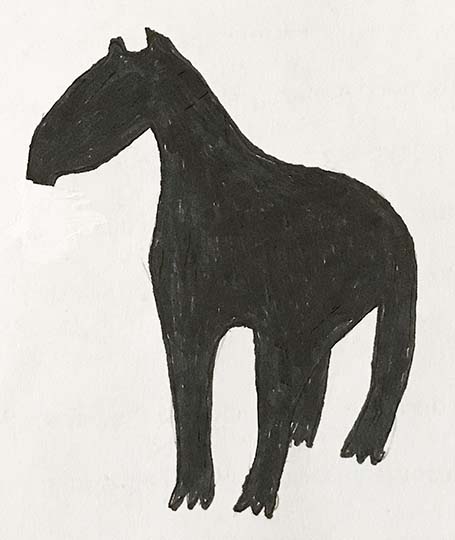In 1839, Charles Darwin mentioned his discovery of a half of a skeleton of a very strange fossil in Patagonia, Argentina. He described it as a “huge beast with a long neck like a camel.” In 1838, the British anatomist Richard Owen, named the fossil Macrauchenia patachonica. The genus name is derived from Greek and means “robust neck,” which reminded Owen of the neck of a llama. He believed furthermore that this fossil belonged to the same division as that of the rhinoceros, tapir, and paleotherium (a genus of early horse).
Subsequent experts referred to this strange fossil as belonging to a group of mammals called litopterns; in fact, it turns out that Macrauchenia patachonica was the last of the litopterns.
Litopterns have been regarded by most vertebrate paleontologists as being herbivore (plant-eating) placental mammals that lived only in South America from Paleocene to Pleistocene time. Macrauchenia patachonica lived only during the Pleistocene.
Macrauchenia patachonica had a long body (about 10 feet long) with a moderately narrow head, a long neck and sturdy legs. This animal weighed about 2,300 pounds and was about the size of modern-day "black" rhinoceros. Furthermore, M. patachonica has three toes on each leg, with the middle toe the largest. Its skull has 44 durable teeth, used for grazing on grasses. Its skull also has a nasal opening high on the roof of its skull above but between its eyes. It is very unusual for a Pleistocene herbivore to have its nasal opening there. The ankle joints are such that it might have had the ability to rapidly change direction when it ran at high speed. Whether or not Macruchenia patachonica had a proboscis is controversial. The following sketches show both possibilities:
In the 2020’s, researchers using DNA-based studies of bone material determined that Macrauchenis patachonica can now be more accurately classified as closest (i.e., a sister group) in its evolutionary history to tapirs and horses. Furthermore, this fossil is not too far from the rhinoceros group, but is, in fact, far from the camel group.
A brief chronology of Charles Darwin’s life and how the extinct Macrauchenia influenced it:
1809-born in England
1831-employed as a naturalist for a voyage aboard the HMS Beagle (a ship of the British Royal Navy); the main purpose was to survey the coastline of South America and to chart its harbors; the studies by Darwin were largely a bonus—but what a bonus!
1836-returned to England and shared the fossils he collected with researchers at museums.
1838-Richard Owen, a specialist in anatomy, wrote about and named the fossil Macrauchenia.
1839-Darwin published his own findings about Macrauchenia.
1859-Darwin published his “On the Origin of Species.” Macrauchenis influenced his thinking about his theory of natural selection (= a process of how species form and change over time).
1882-Darwin died at age 73. He is buried in Westminster Abbey in London, England, and visitors can visit his burial site.


No comments:
Post a Comment